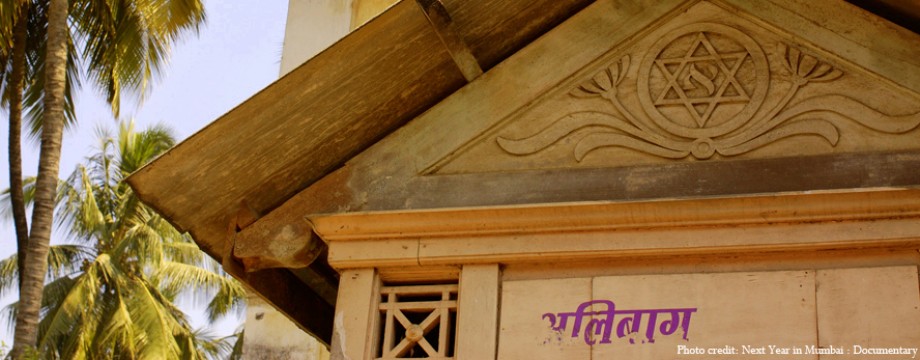Title: Kerala and her Jews: A paper
Author: S. S Koder
Published: 1965
Country Published: India
Publisher: Cochin : Chandralekha Printers
ASIN: B0007JRVJM
Description:
From the 5th to the 15th century, the Jews in Cranganore or Kodungalloor the then maritime hub of Kerala have had virtually an independent principality ruled over by a Prince of their own race and choice. The fame of this little Jewish kingdom spread far and wide.
The ‘Cranganore’ or ‘Kodungalloor’, known as Muzhiris to the Greeks and Shingly to the Jews was the only sea port in India known to the outside world. It was to this port therefore the Jews turned for a heaven of refuge and a centre for trade. The destruction of Cranganore or Kodungalloor is often compared to the devastation of Palestine in miniature and the consequent dispersal of Jews from their Holy Land.
The attachment of the Jews, especially of those of Parur and Mala ( 2 places in Kerala), to Cranganore or Kodungalloor was so strong that till recently a handful of Shingly sand found a place in the coffin of every Jew along with that from the Holy Land. The majority of the Jews even now avoid visiting Cranganore or Kodungalloor, and, if business brings a Jew thither, he hurriedly leaves the place before sunset.
A small hill known as “Jooda Kunnu” a tank known as “Jooda Kulam”, the Jewish copper plates and the Syrian Christian plates with the signature of four Jewish witnesses in Judeo-Persian in the world, are a few of the ancient relics that can still be seen to remind one of the glorious past of this forgotten outpost of the Jewish world in Kerala.
Just holds that the first colonization of Jews in Cranganore or Kodungalloor was the result of the exodus of the Jews from Persia in the fifth century during the reign of King Kobad. Another theory is that the Kerala Jews are descendants of the tribes taken into captivity by Shalmanezer and that after being freed they came to Cranganore or Kodungalloor or, as another historian would have it, that they are the descendants of the Jews taken to Babylon by Nebuchadnezar.
In his book, ‘Noticias dos Judeos de Cochin’ the oldest printed book on Cochin Jewish history, Moses de Paiva, a Dutch Jew who visited Cochin on the 21st November 1686, asserts that seventy to eighty thousand Jews arrived on the Malabar Coast in 370 A.D from Myorca where their forefathers had been taken as captives by Titus Vespasianus. Rabbi Rabinovitz is of the opinion that the first clear evidence of a Jewish community in India dates from the period of Mohammedan rule and the activity of the Radanites. The tradition of the Cochin Jews on the other hand, maintains that soon after the destruction of the second Temple in the first century, ten thousand Jews were graciously received by the then Hindu Ruler and were allowed to settle in different parts of the country of which the majority made their home in Cranganore or Kodungalloor.
Amidst the confusing thoughts and the conflicting theories about the date of the first settlement in Cranganore or Kodungalloor, there are at least a few instances of direct evidence of a Jewish settlement on the South-West Cost of India during the first century of the Christian era. In a wedding song of the ancient Christians of Malabar, mention is made of one Habban, a Jewish merchant, who was sent by a Royal decree to fetch a man who would build a temple more beautiful than the one King Solomon had built in Palestine. Habban accompanied by St. Thomas arrived in Cranganore or Kodungalloor in 55 A.D., St. Thomas was welcomed by a Jewish flute girl. He stayed in the Jewish quarter of the town and some Jews are said to have been baptized by him in Cranganore or Kodungalloor. A Roman Merchant ship that plied regularly between Myes Hormes on the Red sea and Arabia, Ceylon and Malabar found a Jewish colony in Cranganore or Kodungalloor in the second century. The Babylonian Talmud compiled in Babylon between the third and sixth century refers to a Rabbi Judah, a Hindu convert to Judaism who was held in high esteem. As there were no Jews then in any other part of India, the conversion must necessarily have taken place in Cranganore or Kodungalloor.
According to Abulfedas’ geography, Shinkaly was situated near Shalvat which is in the vicinity of Cranganore or Kodungalloor of today. Both these towns are mentioned as Centers of Jewish settlements, Cyngilin according to mediaeval travelers and Cranganore or Kodungalloor by writers of the 16th century. It is interesting to learn that even today some of the hymns chanted in the synagogues especially on Jewish Holy days are called Shingly Melodies.
Location URL: http://www.amazon.com/Kerala-her-Jews-S-Koder/dp/B0007JRVJM/ref=sr_1_1?s=books&ie=UTF8&qid=1311616601&sr=1-1
